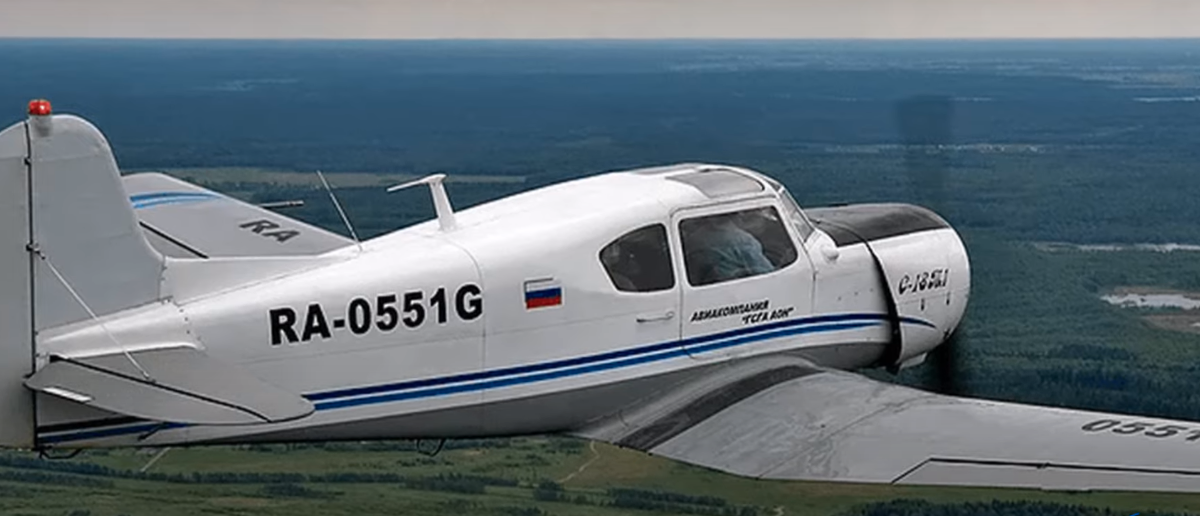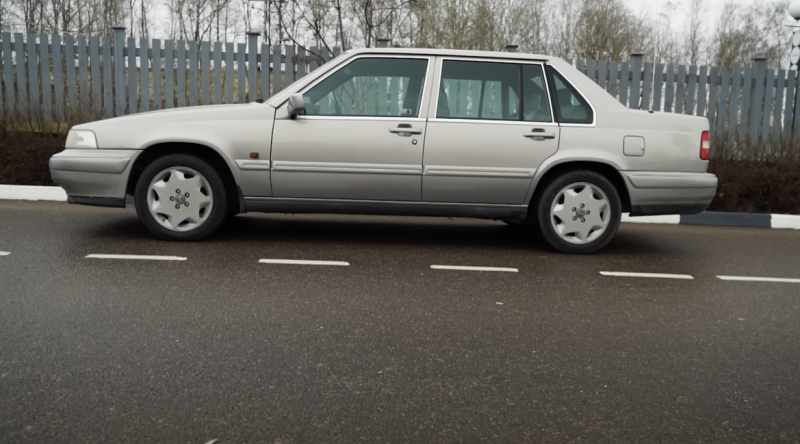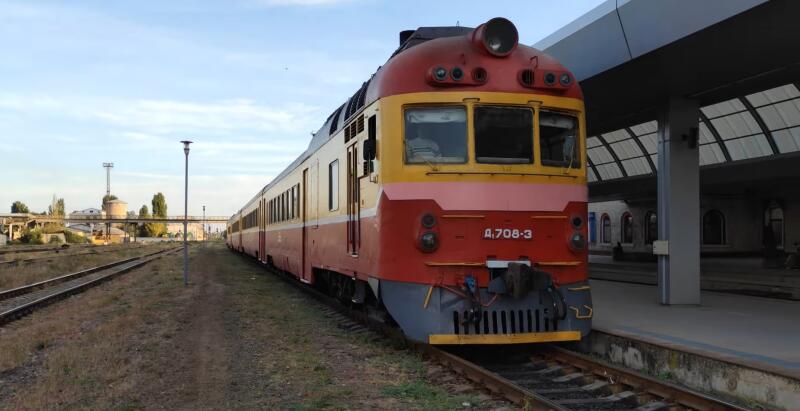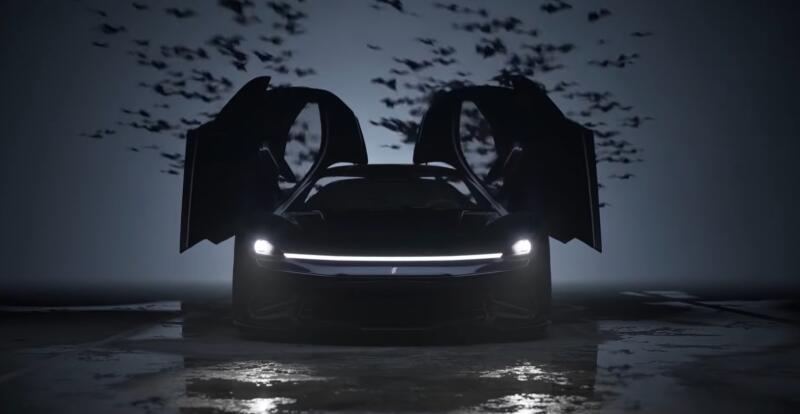Yak-18
The most famous monoplane, which successfully replaced the obsolete UT-2, developed by Yakovlev, and Polikarpov's Po-2 (U-2). The new machine inherited many elements from its predecessor UT-2L. This is a closed double cabin, a hood, where each engine cylinder has its own fairing. The vertical type of plumage of the Yak-18 is the same as that of the mass-produced UT-2M. Also worth noting is the fuselage, built of trusses and a wing with a pair of spars.
 One of the first Yak-18 models. Photo: YouTube.com
One of the first Yak-18 models. Photo: YouTube.comThe Yak-18 is the first Soviet training aircraft made entirely of metal and equipped with a retractable landing gear. The instruments and equipment of the cockpit (as they would say now, “avionics”) made it possible to fly at any time of the day. If we summarize the design data of the aircraft, we can confidently say that it looks like a fighter.
The aircraft turned out to be extremely successful and many modifications appeared on its basis, one of which is the Yak-18P, which means “aerobatic”. It is worth noting: until the end of the 50s, “barrels”, “dead loops”, “immelmanns”, etc. were considered something applied, secondary. But the world-class aerobatics competitions held in Prague (1960) refuted this opinion. It suddenly turned out that in the Soviet Union there is no aircraft that would defend the honor of the state in such competitions.
Yak-18P and PM
The model began to be developed on the basis of the Yak-18A. The result was a single-seat version of the "AP", designed for sports piloting. However, this was a trial version. In the future, another upgrade was carried out. In particular, they moved the cockpit closer to the nose, redesigned the landing gear, which began to retract not along the wing chord, but towards the fuselage. After testing, the aircraft confirmed its high performance and was put on the conveyor with the “P” index. Soviet athletes who competed in Spain won prizes. A total of 120 pieces of equipment were produced.
 The Yak-18PM is capable of the most complex pirouettes. Photo: YouTube.com
The Yak-18PM is capable of the most complex pirouettes. Photo: YouTube.comEncouraged by the success, the engineers of the Design Bureau. Yakovlev began to develop the next version of the sports aircraft, later named the Yak-18PM. Changes have been made:
✅ instead of the outdated AI-14R engine (260 hp), they installed the AI-14RF, which developed 300 "horses"
✅ to increase the stability of the aircraft in an inverted position, we reduced the angle of the wings (they "bent" back)
✅ cockpit is now moved to the tail for better visibility
✅ strengthened part of the external controls
As for the overall design, it was still based on steel pipe trusses inside the fuselage. A duralumin sheathing was attached to them. The "finishing" of the wing and tail was carried out with a canvas. Chassis - tricycle. Technical parameters (basic) Yak-18 PM:
✅ wingspan - 10,6 m
✅ empty weight (maximum) - 810 kg (1110 kg)
✅ power plant - three hundred "horses"
✅ speed - up to 320 km / h
✅ height - up to 4 km
✅ flight range - 400 km
In 1966, the Fourth World Championship started, where our pilots were far ahead of their rivals. The highest title among men was won by V. Martemyanov, women - by G. Korchuganova. The flight "ability" of the Yak-18PM was highly appreciated by foreign experts: they were given the opportunity to test the equipment in the sky. On this plane, Soviet athletes took part in the Sixth World Championship (Great Britain, Hallavington, 1970), where they became the absolute leaders, among them - Svetlana Savitskaya (team standings) and Igor Yegorov (four "gold" in different disciplines) . On this occasion, the Americans wrote (Flight International) that "Russians take aerobatics more seriously" than any other "nation".
 Computers and displays? Forget about them in the cockpit of the Yak-18!. Photo: YouTube.com
Computers and displays? Forget about them in the cockpit of the Yak-18!. Photo: YouTube.comLater they released the Yak-18PS, from which they removed the "extra" equipment and attached a wheel in the tail. The plane turned out to be 100 kg lighter than the PM.
Yak-50
It was developed in 1972. The project was led by V. P. Kondratiev. Initially, they decided to leave the aerodynamic scheme, like the Yak-18PS, unchanged. As a power plant, an air-cooled M-14P engine (designer A. G. Ivchenko) and a propeller with a pair of blades were used. The cockpit lantern was made in the form of a drop.
 A pair of Yak-50s take to the skies. Photo: YouTube.com
A pair of Yak-50s take to the skies. Photo: YouTube.comThe first "baptism of fire" of the model took place in 1976 at the competitions of the socialist countries in aerobatics in Czechoslovakia. There were thirty prizes in total, of which Soviet aces pilots got 23, of which eight were the first. In 1976, a pilot from the USSR Viktor Letsko became the absolute winner at the VIII World Championship in Kyiv. The following year, our athletes won prizes at European competitions in France. "At the same time" were recorded records for speed and recovery. Characteristics of the Yak-50:
✅ wingspan - 9,5 m
✅ weight without load (maximum weight) - 765 kg (900 kg)
✅ power unit - 360 "horses"
✅ speed - up to 420 km / h
✅ ceiling - 5500 m
✅ range - 495 km
The aircraft was exported to Australia, England, Czechoslovakia, Poland, East Germany, Denmark.
Yak-53
After the triumph of the Yak-50, there was a desire to create a more advanced model, which received the index "52". This aircraft did not become "purely" sports: its "duties" included the initial training of future pilots, training flights, and also towing gliders. The requirements for the Yak-52 were universal, as a result of which he received a more powerful engine, advanced avionics for those times, which made it possible to learn to fly "blindly". As for sports, this model became the basis for the creation of the "acrobatic" Yak-53 aircraft.
 In the cockpit of the Yak-52 during aerobatics (heaven and earth change places!). Photo: YouTube.com
In the cockpit of the Yak-52 during aerobatics (heaven and earth change places!). Photo: YouTube.comIts development began in 1981. The layout of the Yak-52 was used as the basis. There were not so many differences: the cockpit was made single-seat and all the “excess” was removed, reducing the weight of the aircraft by 100 kg. For this, the wings, chassis, and control system were “modernized”. The same nine-cylinder M-14P engine with a propeller from a pair of blades was used as the main unit. Specifications:
✅ wingspan - 9,3 m
✅ weight (maximum) - 900 kg (1060 kg)
✅ engine - three hundred and sixty "horses"
✅ speed - up to 420 km / h
✅ ceiling - 6000 m
✅ flight range - 510 km
On this aircraft, produced in a single copy, pilots M. Molchanyuk and V. Makagonov set a record for the speed of ascent. The flights took place in 1982 on February 15 and 23. Up to a height of 20 thousand feet (6000 m), the plane "got" in 13 minutes. 54 sec., and up to 3000 m in 5 min. 5 sec.
 Model of the same Yak-53, on which the rate of climb record was set. Photo: YouTube.com
Model of the same Yak-53, on which the rate of climb record was set. Photo: YouTube.comYak-18T, Yak-50 are still in service today. These aircraft not only train cadets, but also participate in competitions of their class. Russian pilots are regular participants in international aerobatics competitions. Today the planes are different, but prize-winning places don't "forget" us. At the XIV World Championships in Poland (summer 2021), the Russian team "took" all the gold medals, at the same time becoming the leader in the team standings. The absolute winner is Dmitry Samokhvalov, who piloted the Su-31MH.










